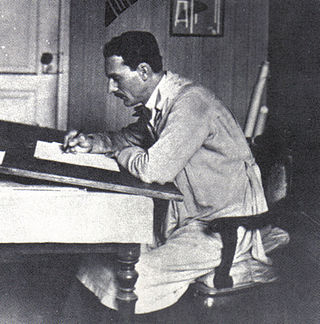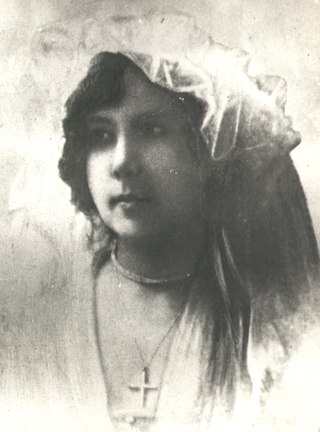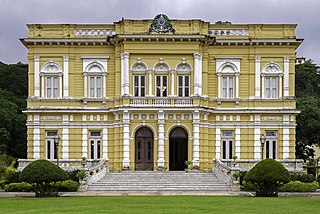
Rio de Janeiro, or simply Rio, is the capital of the state of Rio de Janeiro. Rio de Janeiro is the second-most-populous city in Brazil and the sixth-most-populous city in the Americas. Notably, it is listed by the GaWC as a beta global city and part of Rio de Janeiro is designated as a World Heritage Site.

Antônio Carlos Brasileiro de Almeida Jobim, also known as Tom Jobim, was a Brazilian composer, pianist, guitarist, songwriter, arranger, and singer. Considered one of the great exponents of Brazilian music, Jobim internationalized bossa nova and, with the help of important American artists, merged it with jazz in the 1960s to create a new sound, with popular success. As a result, he is sometimes known as the "father of bossa nova".

Aurélio Buarque de Holanda Ferreira was a Brazilian lexicographer, philologist, translator, and writer, best known for editing the Novo Dicionário da Língua Portuguesa, a major dictionary of the Portuguese language.

Afonso Henriques de Lima Barreto was a Brazilian novelist and journalist. A major figure in Brazilian Pre-Modernism, he is famous for the novel Triste Fim de Policarpo Quaresma, a bitter satire of the first years of the República Velha in Brazil.

Millôr Fernandes was a Brazilian writer, journalist, cartoonist, humorist and playwright. Born Milton Viola Fernandes, his birth was registered on May 27, 1924; the handwriting on his birth certificate rendered the name "Millôr", which he adopted as his official name.
Sérgio Jaguaribe, known as Jaguar, is a Brazilian cartoonist and comics artist. He was born in Rio de Janeiro.

The Guarani: Brazilian Romance is a 1857 Brazilian novel written by José de Alencar. It was first serialized in the newspaper Diário do Rio de Janeiro, but due to its enormous success Alencar decided to compile his writing in a volume. A plausible explanation for this success might be in the fact that the novel spoke of freedom and independence, arguing for a nativeness that could be found in tropical nature and in the indigenous people of Brazil.

José Carlos de Brito e Cunha, known as J. Carlos, was a Brazilian cartoonist, illustrator and graphic designer. J. Carlos also did sculpture, wrote vaudeville plays, wrote lyrics for samba and was a major talent in Brazilian Art Deco graphic design.

Nair de Teffé von Hoonholtz, mostly known as Nair de Teffé, was a Brazilian aristocrat, painter, singer and pianist, having been notably the first female cartoonist in the world. Married to Marshal Hermes da Fonseca, she was the First Lady of Brazil during the last year of her husband's presidency, from 1913 to 1914. She is the person who has had the condition of former first lady, 67 years old. She is to date the longest-lived of the first ladies of Brazil.

The Palácio Rio Negro is a palace located in Petrópolis, situated in a mountainous part of the state of Rio de Janeiro, Brazil. It is one of the official residences of the President of Brazil, used mainly as a country retreat.

Brazilian comics started in the 19th century, adopting a satirical style known as cartoon, charges or caricature that would later be cemented in the popular comic strips. The publication of magazines dedicated exclusively to comics, in Brazil, started at the beginning of the 20th century. Brazilian artists have worked with both styles. In the case of American comics some have achieved international fame, like Roger Cruz with X-Men and Mike Deodato with Thor, Wonder Woman and others.

O Tico-Tico was a weekly Brazilian children's magazine, published between 1905 and 1977. It was the first magazine to publish comics in Brazil. It also featured stories and educational activities. Among its famous readers were Erico Verissimo, Lygia Fagundes Telles, Ruy Barbosa and Carlos Drummond de Andrade.

Events in the year 1931 in Brazil.

Events in the year 1952 in Brazil.

Cândido Aragonez de Faria was a Brazilian caricaturist, painter, lithographer and poster designer who emigrated to France in 1882. Faria designed posters for performers in café-chantants and the cinema but also for music scores. The collective art work of his workshop, which continued after his death, was signed Atelier Faria.
Hilde Weber was a Brazilian artist, cartoonist, and illustrator of German origin. She was the first female cartoonist in the Brazilian press, working for such publications as A Cigarra, O Cruzeiro, Manchete, and Tribuna da Imprensa, where she became known for her political cartoons.
Adolfo Aizen was a Russian Empire-born Brazilian journalist and editor. He grew up in Salvador, moving to Rio de Janeiro at the age of 15. In Rio, he worked at the publisher O Malho, responsible for the magazine O Tico-Tico, the first magazine to publish comics in Brazil. In 1945, Aizen founded Editora Brasil-América Limitada (EBAL), which would become the most important Brazilian comic book publishing house until the 1980s, being responsible for publishing comics like Superman, Batman and Prince Valiant, among others. In 2000, Aiezen was awarded posthumously with the title of "Master of the National Comics" by Prêmio Angelo Agostini.
Otacílio Costa d’Assunção Barros, better known as Ota, was a Brazilian journalist, cartoonist, comics artist and editor.
Luiz Sá was a Brazilian comic book artist, caricaturist, illustrator, painter, scenographer and publicist. Born in the state of Ceará, he moved to Rio de Janeiro around 1929, where he began working for O Tico-Tico, the first comics magazine in Brazil. In O Tico-Tico, Sá created his most famous characters: the trio Reco-Reco, Bolão and Azeitona, considered the first legitimately Brazilian comic book characters and also the most popular of the magazine until its ending, in the 1960s. Sá was also one of the pioneers in Brazilian animation. In 1974, he contracted tuberculosis and, in 1979, he died of complications from the disease. In 1988, he was awarded posthumously with the Prêmio Angelo Agostini for Master of National Comics, an award that aims to honor artists who have dedicated themselves to Brazilian comics for at least 25 years.
Carlos Arthur Thiré was a Brazilian set designer, filmmaker, costume designer, painter and comics artist. He was married to actress Tônia Carrero and father of actor Cecil Thiré. He began his career as an illustrator in the 1930s at the newspaper A Noite, having been nominated to this work by Júlio César de Mello e Souza, a family friend. Thiré created the comics strip Raffles, whose comic books were published by Adolfo Aizen at Grande Consórcio de Suplementos Nacionais publishing house. He also created comics for the magazine O Tico-Tico, but, around the 1940s, he left comics to focus on his work as an actor and, later, in 1949, as a set designer, screenwriter and director at Companhia Cinematográfica Vera Cruz. In 1998, he was posthumously awarded with the Prêmio Angelo Agostini for Master of National Comics, an award that aims to honor artists who have dedicated themselves to Brazilian comics for at least 25 years.













